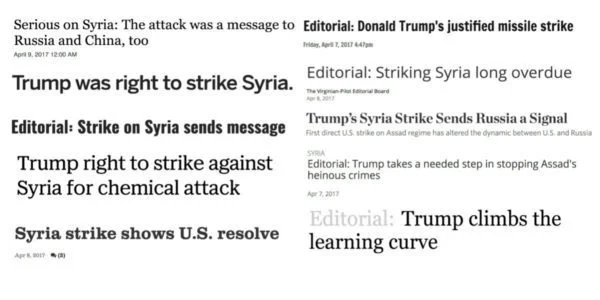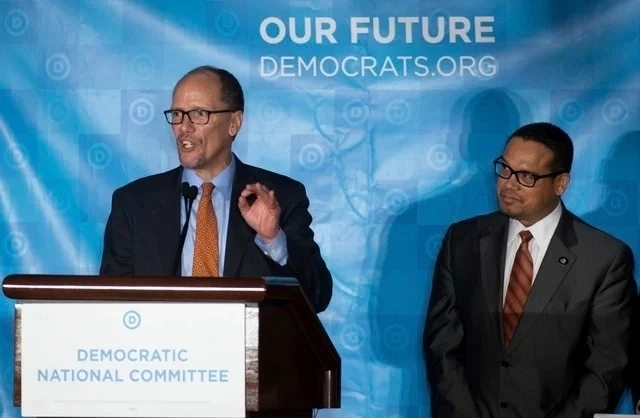Backed by $10 million in ‘Dark Money,’ Gorsuch Claims He’s Apolitical
Published at HuffPost.
In hours of testimony before the Senate Judiciary Committee, Judge Neil Gorsuch, President Trump’s pick for the Supreme Court, repeatedly claimed to be above the political fray.
“I can’t get involved in politics,” Gorsuch said again and again.
Yet as he ducked senators’ questions, a multi-million dollar campaign backing Gorsuch’s nomination was underway.
It includes TV ads, over a million postcards and organizing events at mega-churches, among other outreach efforts.
The campaign is targeting Democratic senators up for reelection in 2018 in states that Trump carried, since they’re more likely to vote for Gorsuch’s nomination.
While Republicans hold a 52-48 advantage in the Senate, Gorsuch’s nomination will need 60 votes to overcome a pledged Democratic filibuster. That is, unless Republicans change the rules and allow a simple majority to cut off debate on Supreme Court nominations (known as the “nuclear option”).
Judicial Crisis Network
Helping lead this effort is a little-known group, the Judicial Crisis Network, which pledged to spend at least $10 million to back Gorsuch’s nomination.
This ‘dark money’ group doesn’t list its donors, but appears to be tied into the network led by oil barons Charles and David Koch.
Sheldon Whitehouse, a Democratic senator from Rhode Island, asked Gorsuch if he knew who was behind the effort.
“Senator,” he replied, “I could speculate based on what I’ve read and what I’ve heard, but I don’t know individuals who are contributing. I don’t know that.”
“He probably knows who he owes the favor to,” The New Yorker’s Jane Mayer told Democracy Now.
“The thing about dark money is, often the person who it’s benefiting knows; it’s just the public that’s not allowed to know,” said Mayer, who wrote the must-read book Dark Money.
Once on the divided Supreme Court, Gorsuch could be the deciding vote in decisions effecting the wealthy interests who supported his nomination. But with his backers’ identity hidden, the public will be in the dark about his potential conflicts of interest.
Merrick Garland
Prior to backing Gorsuch, the Judicial Crisis Network spent $7 million in 2016 to (successfully) thwart President Obama’s Supreme Court nominee, Merrick Garland, from even getting a confirmation hearing.
Now Trump has tapped Gorsuch for the seat Garland was nominated to fill, which has been vacant since the death of Justice Antonin Scalia last year.
Curious what the Judicial Crisis Network saw in Gorsuch that it didn’t see in Garland, Whitehouse put the question to Gorsuch.
“You’d have to ask them,” said Gorsuch.
“I can’t because I don’t know who they are,” replied Whitehouse. “It’s just a front group.”
Philip Anschutz
The dark money backing Gorsuch could be funded by a number of people, or perhaps just one.
“Hypothetically it could be your friend, Mr. Anschutz,” Whitehouse said, referring to Philip Anschutz, a secretive right-wing billionaire.
When he was in private practice, Gorsuch worked for Anschutz, who began his career in oil and gas and now presides over a vast business empire.
In 2006, Anschutz used his political clout to lobby for Gorsuch to be named a federal judge, which he was.
After that, it appears the two Coloradans stayed in contact. Gorsuch has been a semi-regular at Anschutz’s annual gatherings, the Times reported.
The ties don’t stop there.
In 2005, Gorsuch partnered with two of Anschutz’s top associates to purchase a 40-acre property where they built a vacation home together, which they still jointly own.
While serving on the Court of Appeals, Gorsuch recused himself on (nearly all) cases involving Anschutz’s interests, the Times reported.
But that may change if Gorsuch gets on the Supreme Court. He’s now leaving the door open to ruling on cases involving Anschutz.
The Frozen Trucker
Truck driver Alphonse Maddin came close to freezing to death when his truck malfunctioned on a subzero night in the winter of 2009.
Despite the severe weather, his employer, TransAm Trucking, instructed him to either drive his unsafe vehicle or stay put and wait for assistance. But after three hours staying put, during which time he’d dangerously fallen asleep, Maddin opted to protect himself.
He unhooked the (malfunctioning) trailer from the (operational) truck, which he drove to a gas station a few miles away. He returned within 30 minutes, the truck was repaired, and he completed his delivery.
He was still fired.
“Seven different judges heard my case,” Maddin said at a recent press conference with Democratic senators. “One of those judges found against me. That judge was Neil Gorsuch.”
Making the Short List
At his confirmation hearing, Gorsuch was grilled over this decision, in particular by Senator Al Franken, who called the ruling “absurd.”
But it may have been this very decision that secured Gorsuch’s nomination, says Maddin’s attorney, Robert Fetter.
He notes that Gorsuch was not on Trump’s initial list of Supreme Court candidates. Then Gorsuch issued his ruling in Maddin’s case and found himself on Trump’s second and final list.
Trump was assisted in preparing these lists by the Federalist Society and the Heritage Foundation, two right-wing groups which have been funded by Anschutz and the Kochs, among others.
“Certainly, if I were the Chamber of Commerce or other business interest and I saw that decision,” Fetter told Democracy Now, “that signals to me that this is my kind of guy.”
Photo Credit: Screenshot from C-SPAN


